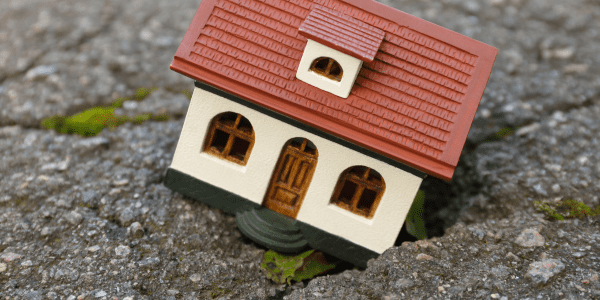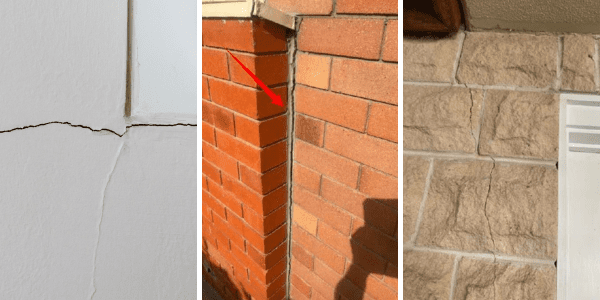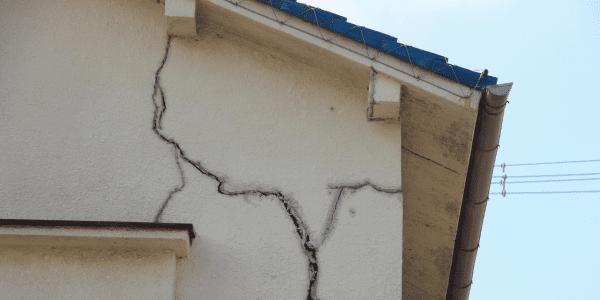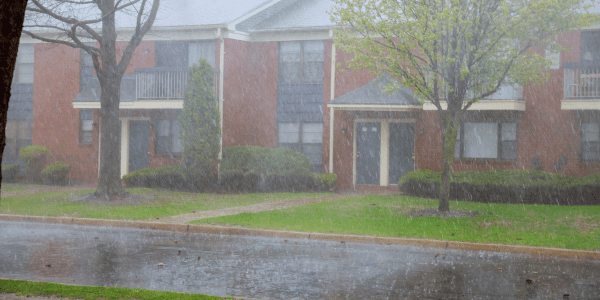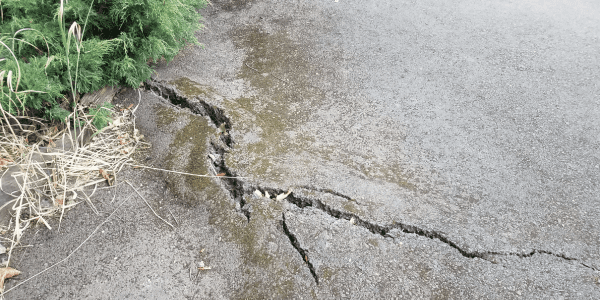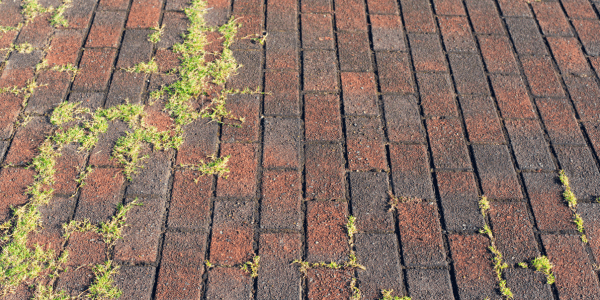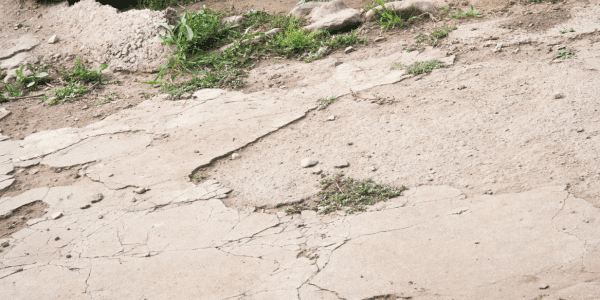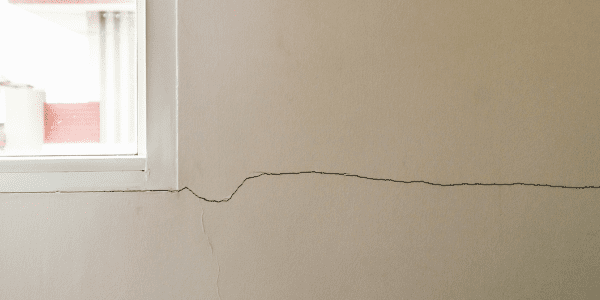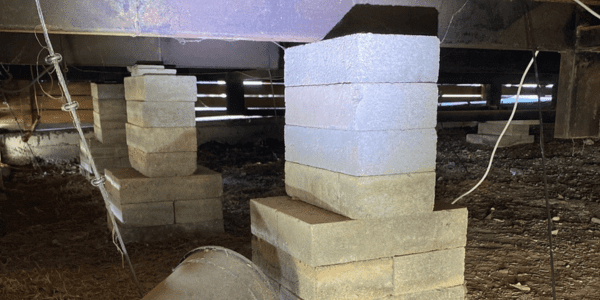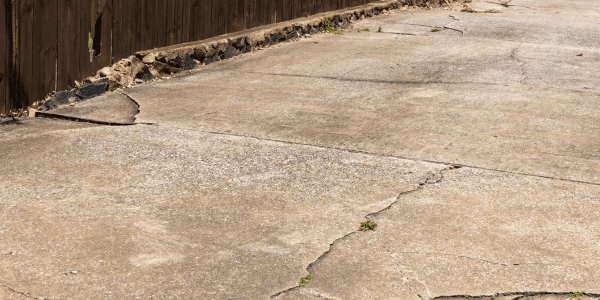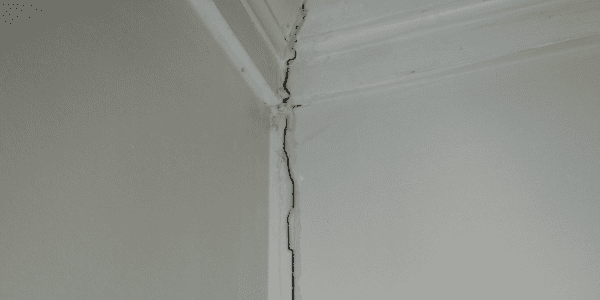Cracking In Houses, When Do I Need To Worry?
Some cracks in houses are normal. Others are not. Learn how to tell the difference.
Depending on the size of the crack and where it's located, it can indicate different things. However, all cracks need to be taken seriously.
In this blog, we'll take you through the causes of cracks and what they mean for your property.
1. Cracking in houses and hot, dry weather
Most house cracks are caused because of the ground under the foundation shifting.
This shifting is commonly caused by soil drying out and contracting, which moves the house footing. Often, this movement is uneven, and this is what causes cracks and fissures.
The type of soil your house is built on matters greatly.
Clay soils are slow to absorb water, whereas sand and loam absorb water quickly.
As such clay soils are more prone to shrinkage due to lack of moisture, so cracks happen more often in houses built on clay.
2. Cracking in houses and moist soil
Heavy rainfall and other sources of water can also cause soil to shift.
As soils such as sand and loam are quick to absorb water, they are quick to expand because of rainfall.
This shifting can also cause cracking in houses.
Quick changes from dry and hot weather to cold and damp weather can exacerbate this process and make cracks even worse.
3. Other effects of water
Heavy rainfall, surface run-off, excessive use of garden sprinklers and leaky downpipes can cause soil to wash away from the foundation of your home, causing your home to shift.
As the house shifts due to changes in the soil, cracks may appear.
4. Trees and shrubs
The roots of trees and shrubs located around your property draw moisture away from the foundations of your home.
The way tree roots draw moisture away from the foundations causes soil shrinkage and therefore, cracks.
Conversely, removing tree roots will cause the soil to reabsorb lost moisture, causing the soil to expand and creating movement.
5. Cracking in houses caused by vibrations
Houses can also move and shift because of nearby ground vibrations caused by nearby construction and heavy traffic.
These vibrations can move the foundation of your home and cause cracks.
6. Uneven settlement
If a house is built on uneven ground, as it settles this can cause stress on the structure will quickly cause cracks.
Generally, this problem occurs in newly build properties, however it can also occur when a new extension is added to a home.
7. Cracks as the building ages
As your home ages, it will adjust to environmental conditions which will result in shrinkage and warping, which can cause cracks.
8. Poor structural design
Structural design can influence the rate at which the house cracks, particularly if the design is poor or has significant faults.
Insufficient bracing and support can cause movement while the concrete is green, resulting in cracks.
The removal or cutting off of too much wall framing can also result in sagging and cracking.
Inadequate protective covering against heat on the roof can cause heat to warp the house, particularly if the building has a metal frame.
9. Cracks in driveways
Driveways often become cracked because heavy vehicles drive on them, day after day.
Over time, this causes the concrete to crack and buckle.
10. House cracks in vacant homes
If you leave a house unoccupied for too long, this can result in cracks in both the ceiling and the walls.
This is because that when people are home, they will always be adjusting the temperature of the building to ensure comfort.
However, when no one is at home, the building can become very hot, very quickly. This extreme temperature can cause cracks.
During particularly hot summers, residents can leave for two weeks and return to find large cracks in the wall.
How to find cracking in houses
If you are concerned about cracks, you can engage a building inspector or engineer for more information.
They can conduct pre-purchase and pre-sale building inspections, dilapidation reports and new build handover inspections.
Building reports examine faults around in and around the property including cracks.
Dilapidation reports look at the condition of the building prior to renovation work and then examines if any damage is because of construction. This is particularly helpful to determine cracks caused by vibrations.
New build handover reports examine the quality of newly built homes, including whether any cracks have formed due to settlement or poor construction.
Cracking in houses can become a major issue if left unaddressed, so do not leave it until it is too late.
Contact us today
If you're unsure about the cracks in your home, book a building inspection today by calling us on 07 3807 0122 or via our website.

